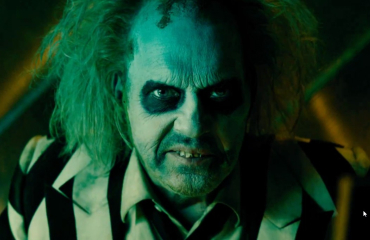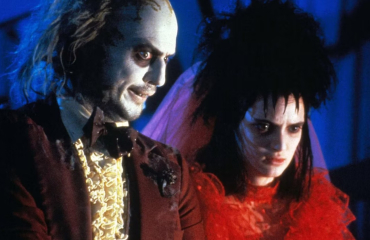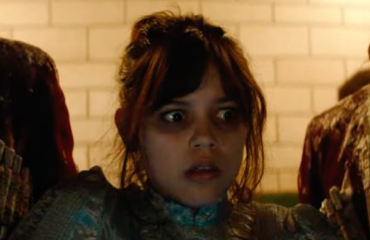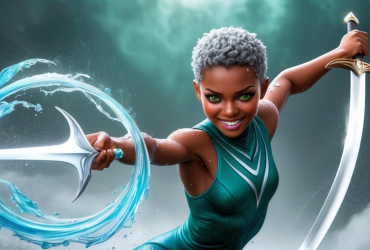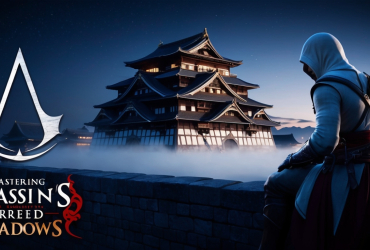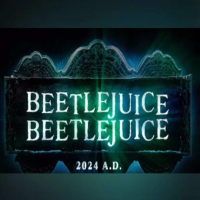
Beetlejuice
- 08-08-2024
Beetlejuice
"Beetlejuice," directed by Tim Burton, is one such movie that blends a cornucopia of elements – comedy, horror, romance, and satire – into a seamless narrative that is as surreal as it is engaging. My recent rewatch of this 1988 masterpiece left me not just entertained but entranced by its absurd charm and inventive storytelling.
It's difficult to categorize "Beetlejuice" into a single genre. Is it a comedy, a horror flick, or a satire? The answer is all of the above. From the moment the opening credits roll, accompanied by Danny Elfman's whimsical score, it is clear that we are in for a cinematic experience unlike any other.
A Spectrum of Intrigue
Tim Burton's creative vision finds a perfect canvas in "Beetlejuice." Set in a quaint, idyllic town, the story revolves around the Maitlands, a recently deceased couple who find themselves trapped in their own house. The arrival of the Deetzes, a family of New York urbanites, sets off a series of hilarious and supernatural events.
The Maitlands and Their Predicament
Alec Baldwin and Geena Davis bring to life Adam and Barbara Maitland, a contented, childless couple whose peaceful existence is tragically interrupted by a fatal accident. Their realization of being deceased is both amusing and poignant, especially when they discover the "Handbook for the Recently Deceased" and the bizarre, colorful landscape outside their front door. This strange new reality quickly becomes a comical yet heartfelt struggle to reclaim their cherished home.
The Deetzes: A Clash of Cultures
Enter the Deetzes, an eccentric family led by Charles and Delia, played masterfully by Jeffrey Jones and Catherine O'Hara. They are the epitome of 1980s yuppie culture, bringing with them a garish vision of postmodern interior design that clashes with the quaint charm of the Maitlands' home. As the family transforms the house into an eclectic blend of contemporary art and absurdity, the Maitlands' desperation grows.
Winona Ryder Shines as Lydia
Among the Deetzes, Winona Ryder stands out as Lydia, the gothic teenage daughter who is as detached from her family as she is in tune with the supernatural. Ryder's portrayal of a morose, yet endearing young girl longing for connection is one of the film's most compelling performances.
The Advent of Betelgeuse
When the Maitlands' attempts to frighten the Deetzes fall short, they turn to Betelgeuse, a "bio-exorcist" whose antics bring a chaotic energy to the narrative. Michael Keaton's portrayal of Betelgeuse is nothing short of iconic – a grotesque, yet magnetic character who oscillates between lechery and manic extravagance.
A Visual Feast
The visual creativity in "Beetlejuice" is astonishing. Burton's penchant for quirky, gothic aesthetics is evident throughout the film. From the surreal landscapes of the afterlife to the deeply imaginative set designs, every frame is a testament to Burton's ability to blend the whimsical with the macabre.
Comedy Meets Horror
The film strikes a perfect balance between humor and horror, never taking itself too seriously yet never losing the eerie undercurrents that define its unique tone. Scenes such as the infamous dinner party where the guests are possessed to dance to "Banana Boat Song (Day-O)" are both hilarious and eerie.
Social Commentary
Beyond its surface-level antics, "Beetlejuice" offers a satirical look at 1980s consumer culture. The Deetzes' obsession with modernizing their home and turning a haunted house into a tourist attraction is a clear nod to Reagan-era extravagance and the commodification of everything, even the afterlife.
Soundtrack and Score
Danny Elfman's score complements the film's whimsical and dark themes perfectly. The music is both playful and eerie, adding another layer of magic to the narrative. The choice of songs, like Harry Belafonte's calypso tunes, further amplifies the absurdity and fun of various scenes.
Special Effects
The special effects in "Beetlejuice" are a delightful blend of practical effects and stop-motion animation. They might appear dated by today's standards, but they add to the film's charm and authenticity, making the otherworldly entities and grotesque transformations more tangible.
Supporting Characters
Characters like Otho, the pretentious interior designer portrayed by Glenn Shadix, add layers of comedic and dramatic tension. His interactions with the Deetzes and the Maitlands bring a unique blend of satire and humor to the film.
The Afterlife Bureaucracy
One of the most fascinating aspects of "Beetlejuice" is its depiction of the afterlife as a bureaucratic maze. The grotesque characters that populate this limbo world, each with their own unique and tragic stories, provide a darkly comedic take on life after death.
Betelgeuse's Unpredictability
Keaton’s Betelgeuse is wildly unpredictable, keeping both the characters and the audience on edge. His chaotic plans and the trouble he stirs up serve as constant reminders that not everything in the afterlife can be controlled or predicted.
Emotional Undercurrents
Amidst the humor and chaos, "Beetlejuice" carries emotional weight. The Maitlands' struggle to hold onto their home and identity, Lydia's yearning for connection, and the Deetzes' dysfunctional dynamic all contribute to a narrative that resonates on a deeper level.
Impressions and Reflections
Watching "Beetlejuice" is like stepping into a fantastical world where the bizarre and the familiar coalesce. Tim Burton's unique vision combined with an outstanding cast makes for a film that is as entertaining today as it was over three decades ago.
Conclusion
"Beetlejuice" is more than just a film; it is a melding of visual artistry, clever storytelling, and unforgettable performances. It serves as a time capsule of the 1980s while offering timeless commentary on human nature and the absurdities of life. As I close this chapter of my cinephile adventures, I find myself grateful for the chance to revisit such a vibrant, inventive, and truly one-of-a-kind movie. "Beetlejuice" will continue to hold a special place in my heart – and in the annals of cinematic history.
Screenshots
